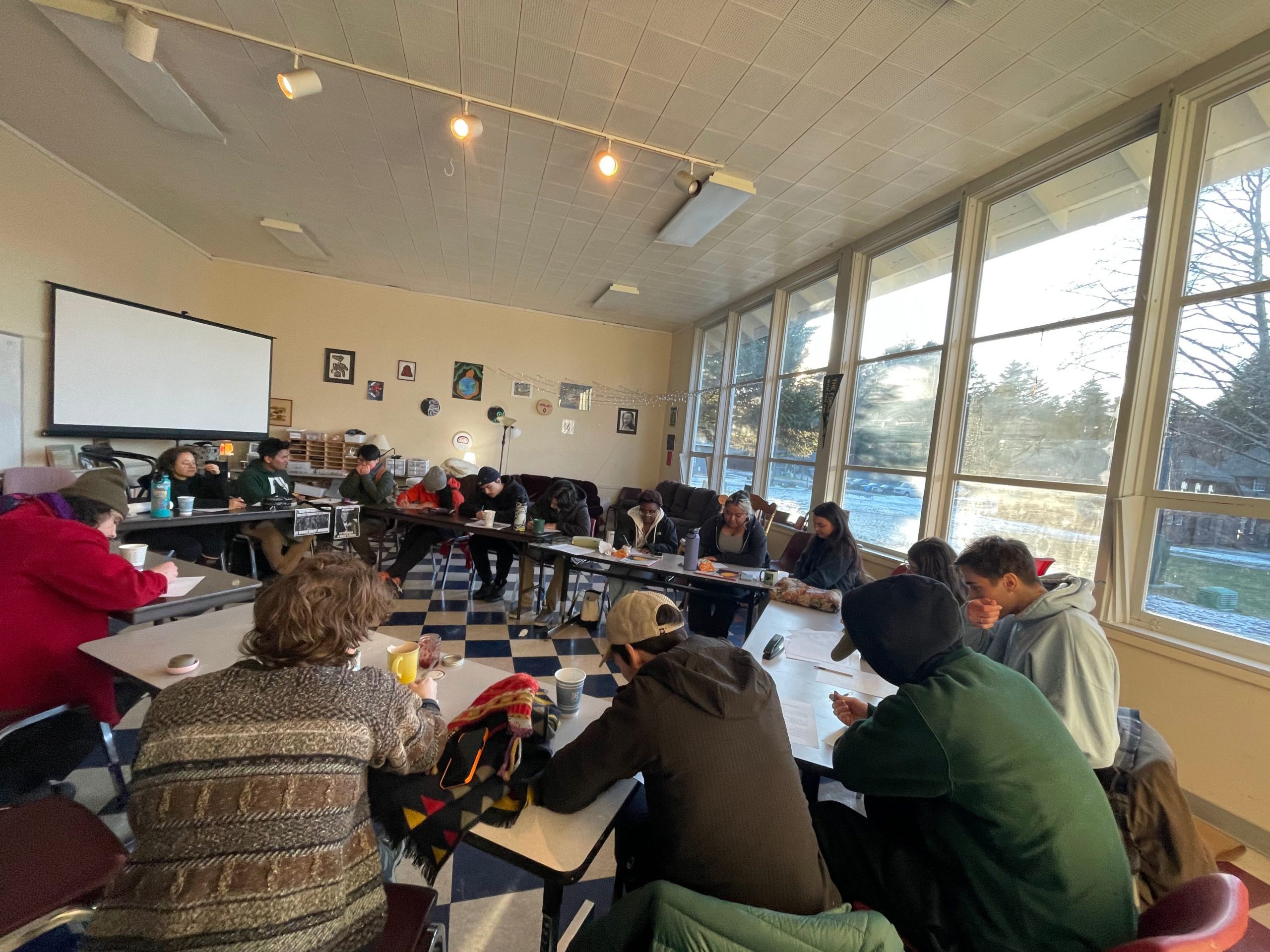Outer Coast, a new postsecondary education option that for years has operated on summer and semester schedules in Stika, is launching a two-year higher education program that could grant students an opportunity to gain an associate’s degree. Applications for the first cohort of students are being accepted on a rolling basis through the spring.
Outer Coast welcomed its first cohort of 16 students in the summer of 2018, in what was a test of a dream conjured up by former state Democratic Rep. Jonathan Kreiss-Tomkins, as well as Will Hunt, and Javier Botero. The three were determined to re-envision what higher education could look like, based on Deep Springs College, which was formed in eastern California in 1917. (Hunt, and current Outer Coast executive director Bryden Sweeney-Taylor are both alums of Deep Springs.)
Mia Siebenmorgen Cresswell, a 2022 Cordova High School graduate who now attends Dartmouth College, attended the Outer Coast Summer Seminar in 2020 via Zoom and returned in person in 2021. She said Outer Coast prepared her well “for the rigor of college,” and challenged her view of education.
“I feel like the background and life experiences of students are actually taken into account in the Outer Coast community, which makes the experience much more nourishing,” she said. “You’re not just enriched as a student, but more holistically as a person.”
The organization originally offered postsecondary gap year programs as well as college-credit-granting summer seminars to students from across the state and the country. In 2020 they launched semester-long programs that offered college credit for courses taken in their Outer Coast year program.
High school seniors graduating this semester can apply to Outer Coast for the first two-year cohort, which will begin this upcoming fall 2024 semester. Applicants selected to move forward with the process will be invited to interview and visit the Sitka campus in the spring.
To Cordova High School students interested in applying, Director Sweeney-Taylor said: “There’s an opportunity to pursue higher education in Alaska that really is expansive in what it offers to students, that is putting ideas into practice that does not require students to assimilate to a narrow vision of what it means to be a college student, but instead what students are bringing to the table is celebrated as something that will allow them to succeed in their education.”
Rolling admissions will accept applications through the spring until decisions are delivered in March, alongside the majority of college admissions decisions across the country.

There are only 20 spots available in the first cohort of students, and Sweeney-Taylor said applications have been rolling in. He said the program has “seen a lot of interest” from applicants, and have “a good pool,” but that their goal is not selectivity for selectivity’s sake. The cohorts will be kept intentionally small.
Sweeney-Taylor said that at Outer Coast students don’t have to leave behind who they are and where they are from.
The new two-year program, while not an accredited college yet, will offer up to 60 college credits to students, meaning they can graduate with an associate’s degree. The courses and degree will be offered through a partnership with University of Alaska Southeast.
The education model is reflected in three pillars: academics, service, and self-governance. Courses offered include a range of liberal arts curriculum, including humanities, STEM and Native studies.
Students would play a crucial part in the management of Outer Coast — from admitting other students to hiring faculty, scheduling maintenance, and selecting service projects based on community needs, as determined through building relationships within the community.
Service projects have – and for the two-year program will – included work with the animal shelter, work on improving the local train system, the science center, women’s shelter, sea debris clean up, elementary school student after school activity support, and more. Program participants will spend at least ten hours a week working with nonprofits like these.
Sweeney-Taylor emphasized Outer Coast’s commitment to Indigenous knowledge and cultural learning. This includes Native language classes, traditional learning classes, and service projects in collaboration with Native organizations in Sitka.
The programs will take place on the Sheldon Jackson campus, where the Sitka Fine Arts Camp is held every summer. Sheldon Jackson College was the state’s oldest institute of higher education, prior to its closure. However, it was also one of the infamous Alaska Native boarding schools that separated children from families and worked to erase Native languages and culture.
Sweeney-Taylor pointed out that in the same rooms and halls Native students were punished for speaking their Native language, Tlingit language, craft and culture classes will be taught.
“We are really thinking about how students can be working to build bridges to the broader Sitka community and the Native community,” he said. “That starts with this notion of our daily work in decolonizing a former Native boarding school.”
Another key principle of the budding institution is to make it affordable for all. Admissions are need-blind, and the institution will meet students and families where they are in order to help them cover the cost of attendance. (Sweeney-Taylor’s background is in college affordability and access.)
Philanthropic endeavors — like donations from Sealaska Heritage Institute, the Rasmuson Foundation, and others — have funded operations in addition to tuition costs.
This is the first year eligible students will be able to access Title IX funding, which includes Pell Grants. However, Sweeney-Taylor said that they will work with every student to make sure they can afford to attend Outer Coast.
Everything they’ve done so far has been building toward this two-year college model. However, they can’t yet call themselves a college until they are accredited by the Northwest Commission on Colleges and Universities. They are currently taking the additional steps to become accredited.
Meanwhile, Outer Coast will still accept students for their ongoing summer sessions.
This story originally ran in the Feb. 9 issue of The Cordova Times.












